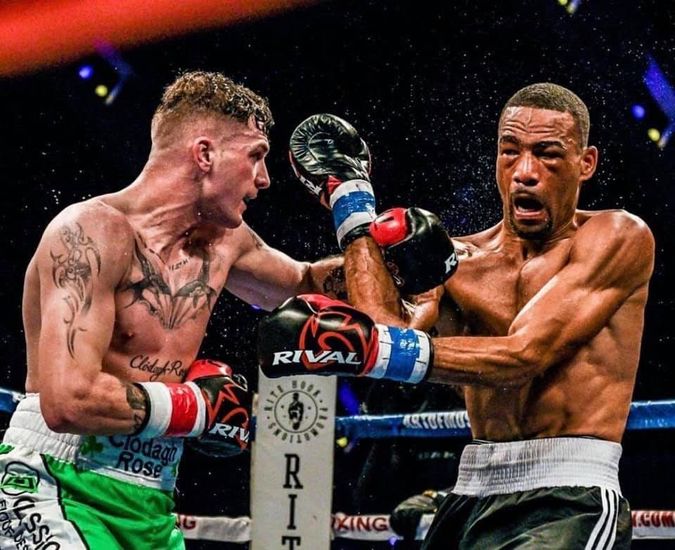In the often-unpredictable world of professional boxing, an unbeaten record is a badge of honor, a testament to skill, dedication, and resilience. For Irish middleweight Connor Coyle, that distinction has now been clouded not by a defeat in the ring, but by a nine-month suspension handed down by the New York State Athletic Commission (NYSAC) following an adverse analytical finding from a drug test. Coyle, however, maintains a resolute stance of innocence, asserting that the testing process itself was fundamentally “flawed.” This narrative presents a familiar crossroads in sports integrity: the strict liability of anti-doping protocols against an athlete`s plea of procedural injustice.
The Contradiction: Unbeaten Record, Failed Test
Connor Coyle, boasting an impressive 21-0 professional record with nine knockouts, found himself in an unexpected predicament after his February bout against Vito Mielnicki Jr. The fight, which ended in a draw, has since been officially declared a “no-contest” by the NYSAC. The reason: a post-fight drug test that flagged a prohibited substance. Details regarding the specific compound remain undisclosed, a common practice in initial reports, leaving the public to ponder the nature of the alleged violation.
The Defense: A “Flawed” Testing Procedure
In response to the ban, Coyle and his legal team swiftly issued a statement, vehemently denying any intentional wrongdoing. Their central argument pivots on the integrity of the testing process itself. Coyle`s attorney highlighted “significant issues with laboratory equipment failures and testing protocols that raised legitimate questions about the validity of the findings.” It`s a familiar tune in the annals of sports doping controversies: the “flawed test” defense, often serving as the last bastion for athletes facing sanctions. Coyle himself echoed this sentiment on social media, stating, “The testing was flawed. Lab failures and procedural errors made the results unreliable. I accepted the resolution to avoid a drawn-out, costly fight — not because I was guilty. Clean from DAY ONE – never cheated, never will.”
“Our investigation revealed significant issues with laboratory equipment failures and testing protocols that raised legitimate questions about the validity of the findings.”
While the exact nature of these alleged “flaws” remains shrouded in legal confidentiality, such claims underscore the complex interplay between scientific rigor, human error, and legal strategy in the anti-doping framework. The burden of proof, in these cases, often falls heavily on the athlete to demonstrate how a test might have been compromised.
The Negotiation: A Reduced Sentence and Pragmatic Compromise
Intriguingly, Coyle`s initial potential one-year ban was successfully negotiated down to nine months by his legal team. This reduction is a critical detail. A typical violation of this nature often carries a year-long suspension, suggesting that the NYSAC, by reducing the ban, may have implicitly acknowledged the possibility of some merit to Coyle`s claims regarding procedural irregularities. Alternatively, it could be interpreted as a pragmatic decision by the commission to avoid prolonged, costly litigation, settling for a compromise rather than a protracted legal battle that could ultimately undermine confidence in their own processes. It seems both sides, perhaps for different reasons, found common ground in expediting a resolution.
The Broader Implications for Sports Integrity
This incident, like many others involving high-profile athletes, shines a spotlight on the perpetual challenge of maintaining integrity in professional sports. Anti-doping agencies and athletic commissions operate under the principle of strict liability, meaning athletes are responsible for any prohibited substances found in their bodies, regardless of intent. However, cases like Coyle`s demonstrate the constant tension between this necessary stringency and an athlete`s right to a fair and accurate testing process. The robustness of laboratory equipment, the meticulous adherence to protocol, and the transparency of the entire chain of custody are paramount. Any perceived crack in this edifice can lead to legitimate questions and protracted legal disputes, potentially eroding public trust.
Looking Ahead: The Road to Redemption
With the nine-month ban concluding on November 14, Coyle will be required to undergo mandatory testing before he is cleared to resume his professional career. This period will undoubtedly be a challenging time for the unbeaten fighter, who now faces the task of not only returning to peak physical condition but also rebuilding a reputation that has been temporarily tarnished. The boxing world will watch keenly to see how Coyle navigates this comeback, eager to see if he can once again step into the ring and continue his impressive run, this time with an added layer of scrutiny on his journey.
Ultimately, Connor Coyle`s case serves as a poignant reminder that the fight for an athlete`s career often extends beyond the ropes, into the intricate and sometimes contentious arena of anti-doping regulations. Whether his claims of “flawed” testing hold more weight than standard athlete denials, or if this was simply a well-orchestrated legal maneuver, the episode leaves an indelible mark on his record and prompts further reflection on the ever-evolving landscape of sports ethics.

